
Pax Dei - The journey so far (en anglais)
Hello Paxians,
We recently celebrated one year of early access for Pax Dei and wanted to provide an update on where we come from, where we’re at, and what’s coming.
The beginnings
Pax Dei has been long in the coming. The idea for the game started brewing in the minds of a few of the Mainframe founders 20 years ago. The core of the game was clear already back then: making an open sandbox world inspired by medieval myths, driven by players in a fully open economy. The first challenge was that what didn’t exist back then was a game engine capable of running the game as envisioned, with visuals grounded in the real world but made larger than life, so one would yearn to live in the world of Pax Dei with a sense of wonder. The second challenge for MMOs has historically been the server-side capabilities needed to run a game with thousands of players. The requirements of MMOs are enormous compared to other games, and the game as envisioned just would not have been possible 20 years ago.
In 2019, we decided it was time and founded a company to make the game real. What had changed was that the Unreal Engine render engine was now very mature and could cater for the style of visuals we wanted, and server compute & Internet bandwidth was now on a level that could be used to run the game. As with most game projects, it took about a year to get a team together, so the preproduction effort for Pax Dei began in earnest in 2020, with us working on designs and developing technical solutions to drive the MMO backend needed on top of Unreal. Another piece of technology we put a significant emphasis on was the world generation pipeline, to enable our relatively small world team to build a game world hundreds of square kilometers in size.
With the player community being the core of the game - all the really interesting things in Pax Dei are intended to be a result of emergent player actions - we started to hit a point in 2023 where developing the game was becoming hard without having the players deeply involved. The Mainframe team has quite a few people who have both worked on MMOs and played them extensively, and we’re very firmly in the camp that believes the player community is what makes MMOs interesting. That, in turn, means we believe developing the game without involving the players from early stages of development won’t result in the best possible MMO, so we wanted to get people on board even knowing the game wasn’t “done” yet, which, in many ways, MMOs never are. As communities form in a game, they shape the game through interaction with the developer, feeding a cycle of adding new gameplay to keep games fresh and interesting.
Given we were far from even Early Access at that point, we opted to start running larger playtests inside a closed beta and collecting feedback from the closed community instead of launching the game in public. This worked fabulous and we made considerable strides in improving the game, but even this started to run out of scale for some of the systems, as having a few hundred people in the game was a far cry from the 8000 players we supported for each world instance at the time, so we decided to launch the game in Early Access.
At this point, we had a building system that showed great promise, an intentionally simple combat system with a variety of PvE content ranging from simple ruins to larger dungeons, a vast, beautiful world for everyone to explore and the beginnings of a PvP system. The game was, and still mostly is, balanced so that it’s highly beneficial to cooperate with other players, which had worked well in the testing, but we wanted to get more insight on how this plays out with a larger group of players.
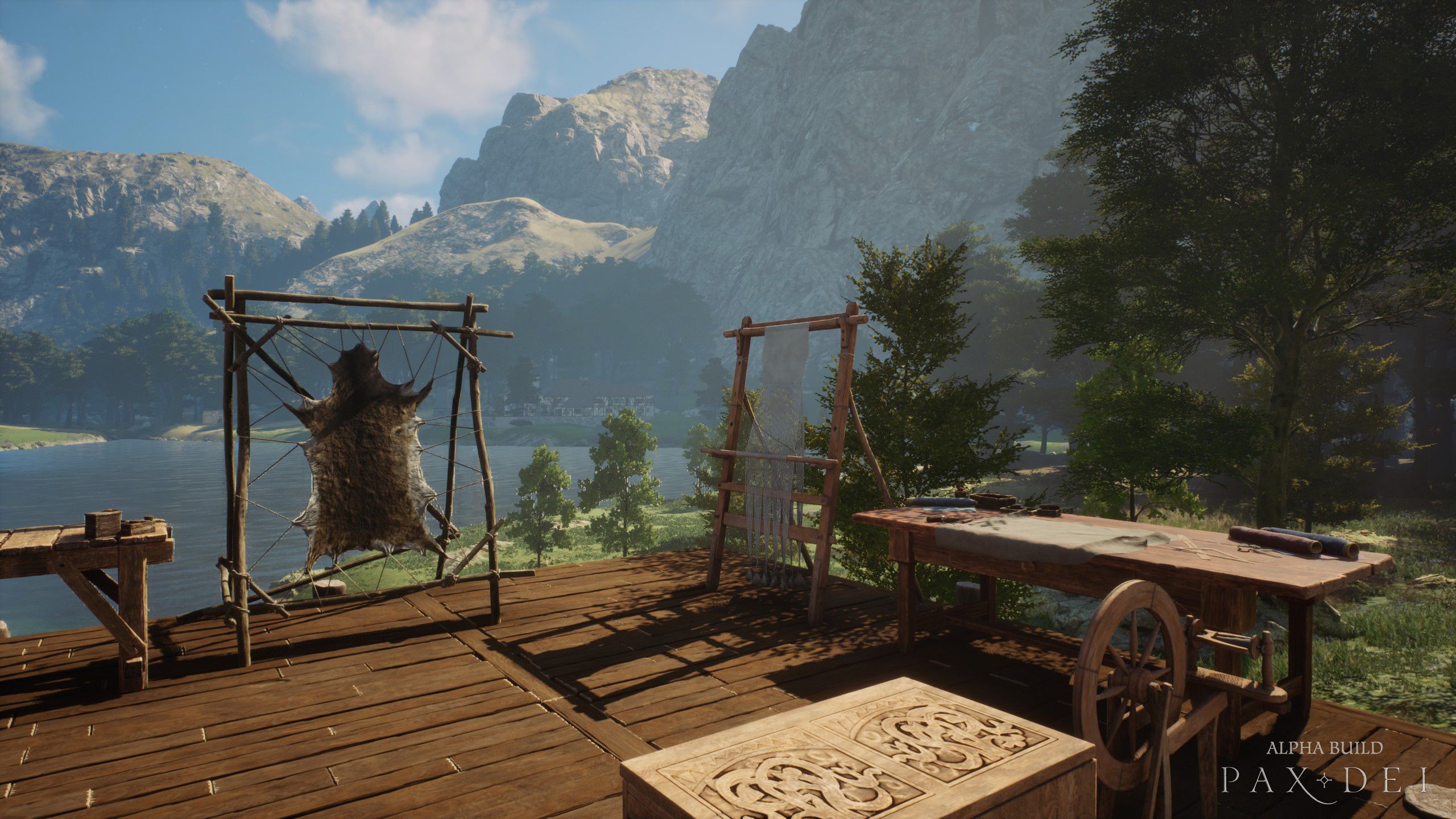
Early Access starts
Enter June 2024 - the game launches in Early Access, and our real learning begins.
At this point, we were very excited and had a ton of plans for what we wanted to put into the game next, which, as you know, got published as a roadmap. In hindsight, we should have been clearer at that point about wanting to change the plans according to feedback from the community and the roadmap as published at that point was a 100% full booking from the team with relatively little booking for changes from all of you, which obviously started flooding soon after.
As you know, the first weeks were pretty rough. We discovered several issues that hadn’t been uncovered in earlier tests, despite those being pretty big. So, in the first month, the team was in firefighter mode and literally fixed more than 100 bugs a week, primarily based on reports from the players. While the fixing was ongoing, we were also collecting feedback from new players and reflecting the roadmap we had for the game against the feedback. And by reading all the feedback, it was evident that the first major update post-launch would have to focus on improving pretty much all areas of the game instead of adding significant new features.
The first update, Proving Grounds, included pretty massive changes to the world and progression. We’d underestimated the amount of time people would play the game alone, even if in a clan. So we restructured the PvE sites and added a significant amount of soloable and small group PvE content into the Heartlands. The combat system got extensive changes on the locomotion to stop the game from feeling like the combat was fighting your controls, which hugely improved the overall feel in combat. Literally everything was rebalanced, aiming to make crafting less grindy. Many locations in the world were found that could be blocked out in unintended ways, which were adjusted, and a lot of roads were added. A load of usability issues were fixed. Last but not least, we made significant changes to the building system to improve performance, where the towns and cities that all of you were building turned out to be a lot bigger than anyone had anticipated.
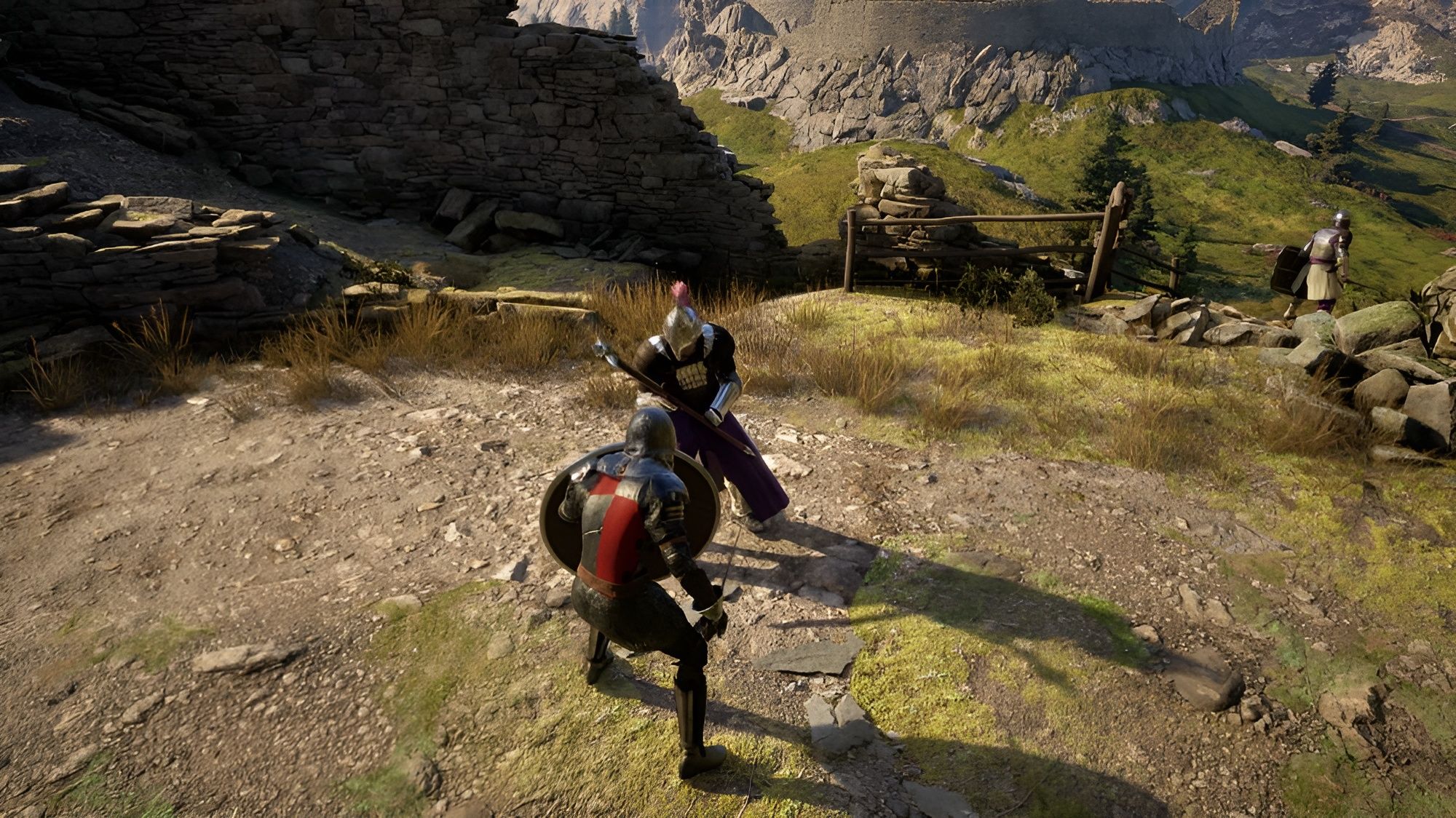
While most of the team was focusing on the Big Fix Update, we were working on two initiatives that saw the light of day later in the fall of 2024.
A huge patch updated the game to use Discord as the underlying tech for chat. Using their tech, we added a load of critical features into the game - friend list, DMs to friends and better public text channels, as well as prepped the game for more features like voice chat. Great communication tools are essential inside an MMO, and this was a big step toward improving them. Chat is also a good example of a feature we all take for granted in MMOs, and due to it being a prominent feature, we never really consider how much effort it takes to implement it well. For smaller developers, these must-haves can end up consuming a large portion of the team time, as no ready-to-use solutions exist for almost anything one needs in games.
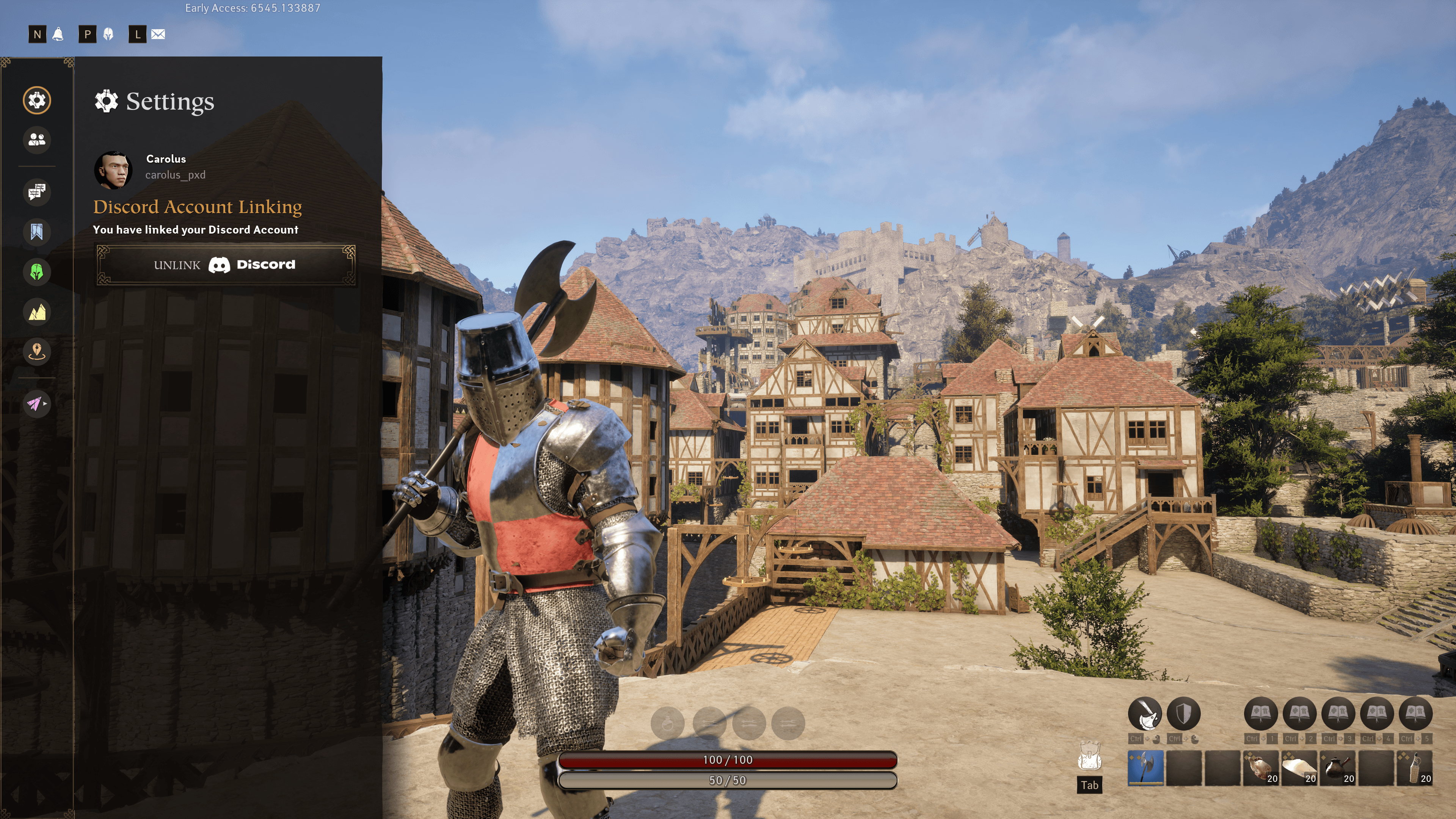
The second big thing to land was the Market Square patch, which added the Gold currency and marketplaces you can build onto your plots. The market is a crucial piece of the puzzle for making the game economy interesting, and while we’d know this to be the case, many of you reminded us of this in a flood of feedback for this not being in the game before the update.
We added to Verse 2 in January by introducing another critical component of the game economy loop - Grace and Miracles. You get Grace by sacrificing Gold, which allows for a variety of non-combat spells to be cast, enabling Gold to have value. We originally intended to launch Grace and Markets at the same time, but the plan changed as we were implementing the two and discovered how hard it was to create a full-blown technical solution that works for an MMO. We deemed the markets inherently valuable and pushed them out early, with a plan to follow with Grace as soon as we could, which we did.
The Market Square update triggered a flurry of feedback. One of the biggest gripes you all had was the distributed nature of the markets. While building a stall on your plot was deemed great, running around a valley to find deals was considered too much effort, resulting in overall poor experience. We already had a design to address this, so based on the feedback this was prioritised as an important improvement.
The update in March added the ability to browse all the markets in the world area you were in at the time. While working on this, we also decided to improve the navigability of the world. The game earlier had a wind feature where you could mark a spot in the map and then press a key to get wind to blow in the direction of the marker, but this was both unknown to a lot of players and worked poorly in many world areas, so it didn’t actually help navigation very much. The replacement for the wind was a compass in the HUD, with indicators for your plots and other nearby points of interest, along with a marker to a market picked in the remote browsing, making the process of navigation a lot easier.
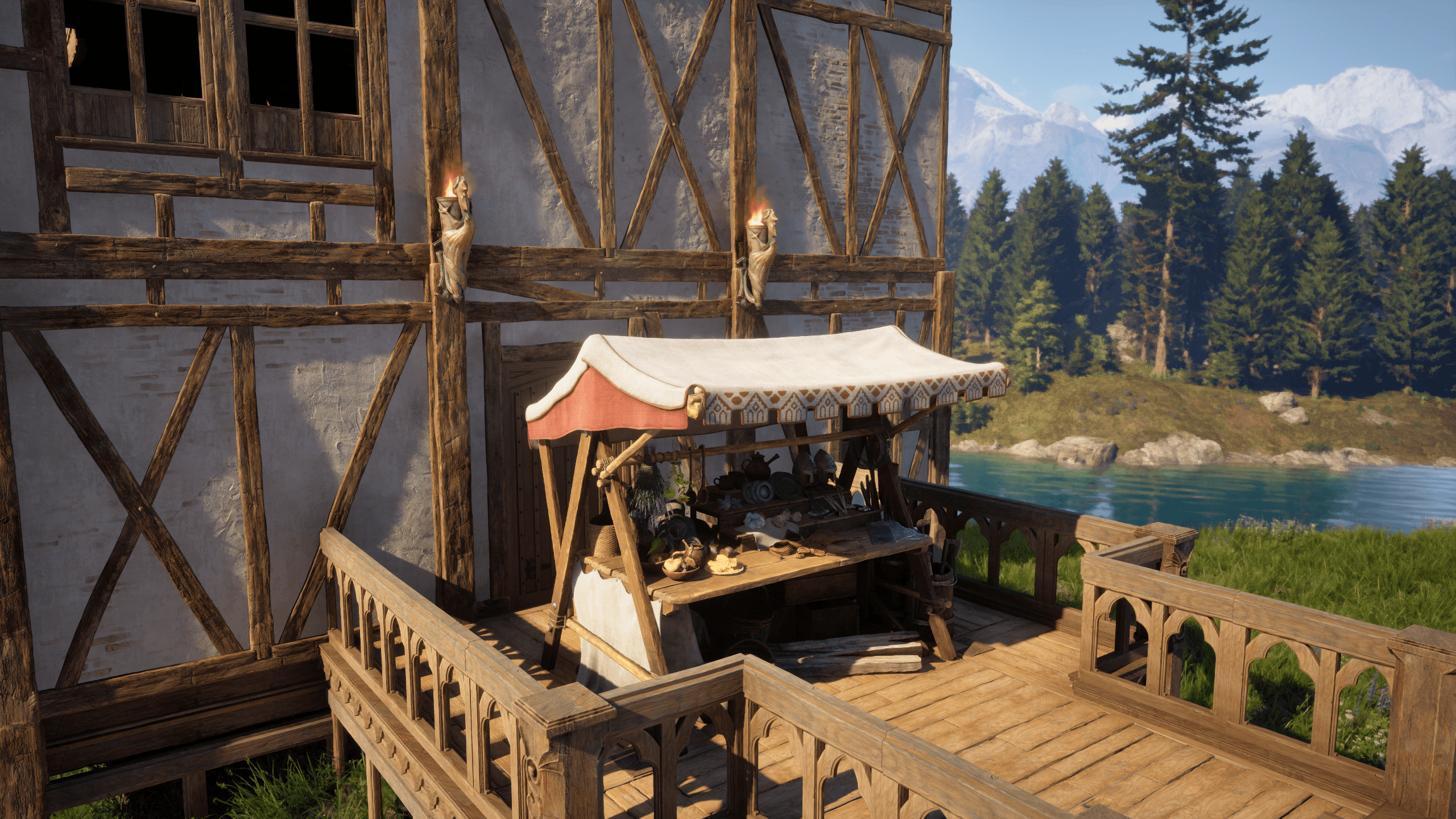
The update also added a bunch of building content, using a mix of ideas from our Discord community and our designs. We also added voice chat that had been requested by many players and automated the selection of harvesting tools for wood chopping and mining.
Verse 3 - The latest update
The next major update - Path of the Adventurer - took until June to go out. We originally wanted this to release around a month earlier, but the QA & polish process for the release ended up taking a lot longer than expected. What happened here is as follows.
One of the biggest sources of feedback for the game had been the combat system, or lack thereof, as some of you would say. The game launched with a very simple combat model and this clearly did not meet the expectations of many of you. The first update after launch fixed combat locomotion issues, which helped a lot, but the big missing feature was still the ability to meaningfully form the MMO holy trinity groups, with some players specializing as healers, some tanking and some acting as DPS. This also meant there was a very specific tank mage set of armor that was the most optimal for playing Pax Dei, which devalued a lot of the game progression and made it a lot less interesting than any of us wanted. The combat team decided to address this for real and started the combat system revamp already in November.
The work ended up taking six months, with a lot of the combat being essentially reimplemented. The changes are too numerous to list here, but with the new combat system and gear progression, we now have a much deeper, more interesting progression for combat, with the specialized roles the player community had been asking for.
At the same time, we had listened and learned quite a bit about how the world worked for a variety of things, from resource gathering to travel and PvE to population density. The world team decided to put these learnings into practice and make sweeping changes into the world. This meant increasing the amount of buildable area in the game to increase the population count of a world to 14,000 players, adding crafters around the Petrae Dei to make new player life and travel easier and redesigning the biome setup in the world to make the resources found in each biome more distinct.

This, of course, came with another massive balancing pass on the crafting to match the new biomes, but also to address another pain point from the community. While it was great that the crafting had co-dependencies between professions, we had implemented this in a manner where it was hard to progress in any of the professions without progressing in all of them. This was a massive undertaking for any player and not really what we wanted, where the intent had always been that you could progress in a profession as a master and not need to spend time in all professions. Verse 3 - Path of the Adventurer saw huge changes in this, for the better.
Our original plan was to launch these as separate updates, but come spring and us starting to package Verse 3 to be releasable, we realized the complexity of version management for the changes effectively forced our hand into combining everything into one huge update - bigger than any of the prior updates - and getting this into properly playable state took a lot longer than we expected.
But not the last one…
This is pretty much where we’re at with the public updates at the time of writing this. We ended up making a huge amount of progress and changes during Early Access have improved the game significantly compared to a year ago. We did end up implementing a lot of things we’d talked about, but also as it happens, the changes we made based on learnings and feedback ended up eating a lot of our time, so not everything we thought of a year ago ended up making it into the game.
Having said that, let’s talk about what we think we’d like to do in the future.
Pax Dei is intended to be a living, breathing beast nurtured by both us at Mainframe and you, the players. Our job is to funnel a mix of our and your ideas into the game to make it as good as possible and ensure you have a great time playing and enjoying the company of everyone in the Pax Dei community. As such, we don’t foresee a future where we stop adding features and content into the game - the upcoming 1.0 moment is not the end of this continuous evolution of Pax Dei.
The big theme of what we’re planning to do next is the societies in the game. This entails organizing as groups beyond clans, both for your benefit but also for the purposes of conflict. In practical terms, we’re finally working on expanding the conflict and PVP in the form of the Feudal system and looking at adding a deeper social layer to the Grace mechanics. The main focus of development for the rest of the year is planned to be in this area. Our intent and goal is that, quite soon, each of you will not only belong to a clan, but also to other larger player-driven organizations that have influence in how the game plays.
While those systems form the basis for our work, we’ll also continue to work on items we’re hearing from the community. The social layers we’re looking at strongly synergize with finally improving the permissioning, both for clans and plots. We’re reading all your feedback on the crafting systems, and we’re indeed grinding our way through the balancing to improve the crafting experience and to make some of the less developed professions better. As an example, work is underway to make the foods and potions a lot more interesting, with a more diverse range of buffs. We’ll also definitely look into everything that touches the economy, from markets to loot, as it all ties strongly into how the game works as a social sandbox.
The next update of the game will start by setting the stage for what's to come. The old Lyonesse will be gone and replaced by a new, much larger Lyonesse, the same size as the other Provinces, which will be needed for the gameplay we’ll be introducing in updates as the year progresses. As a first taster, there will be two new resources exclusively available from Lyonesse, which will enable a new Enchanting feature tied to Alchemy and Jewelcrafting. After refining the resources with the two professions, you can manufacture consumables that permanently boost the Item Power of enchanted items. There are rumors that Cultists in the area are also interested in the resources, so keep an eye out for the gatherers and collectors in the area.
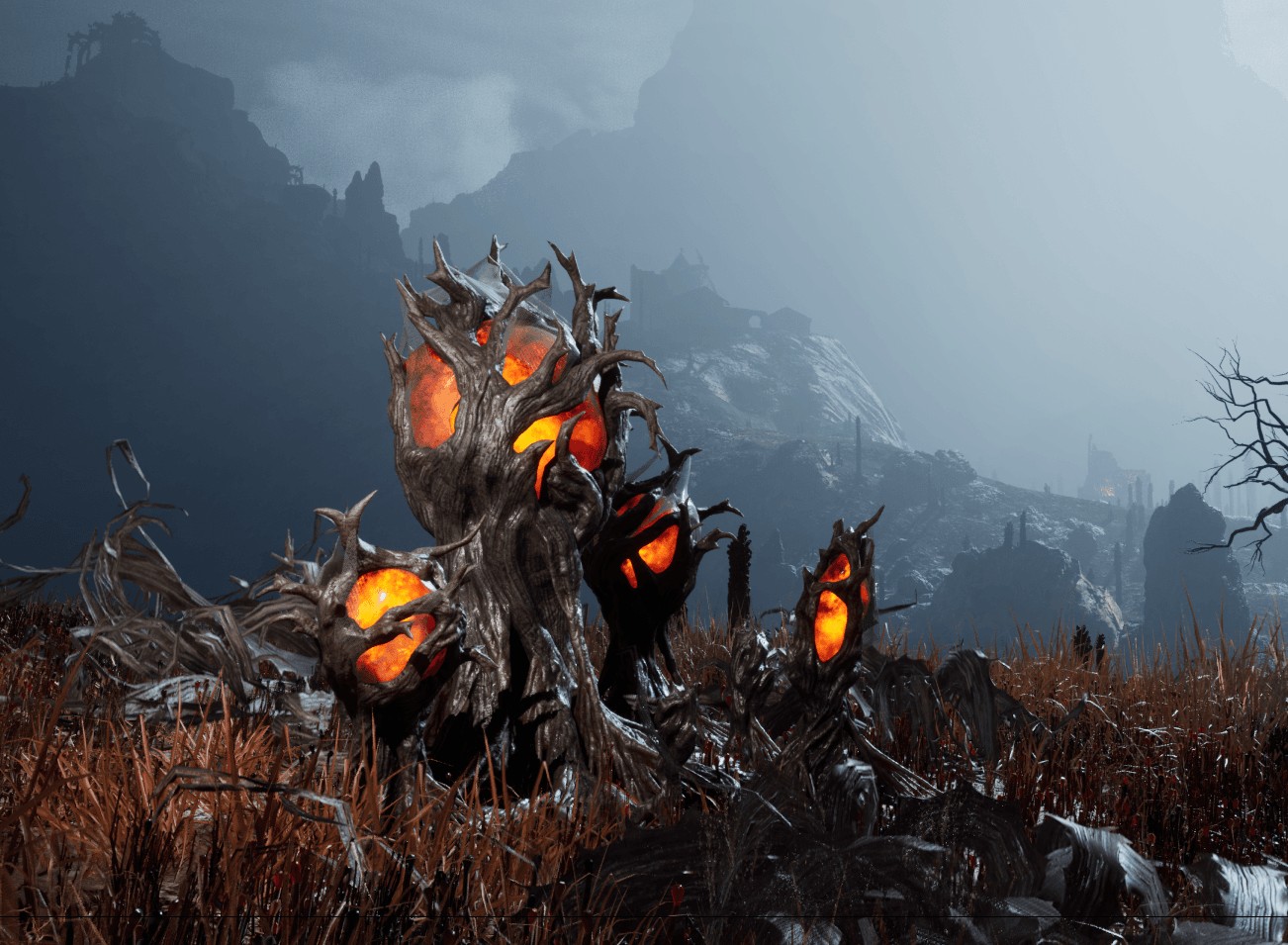
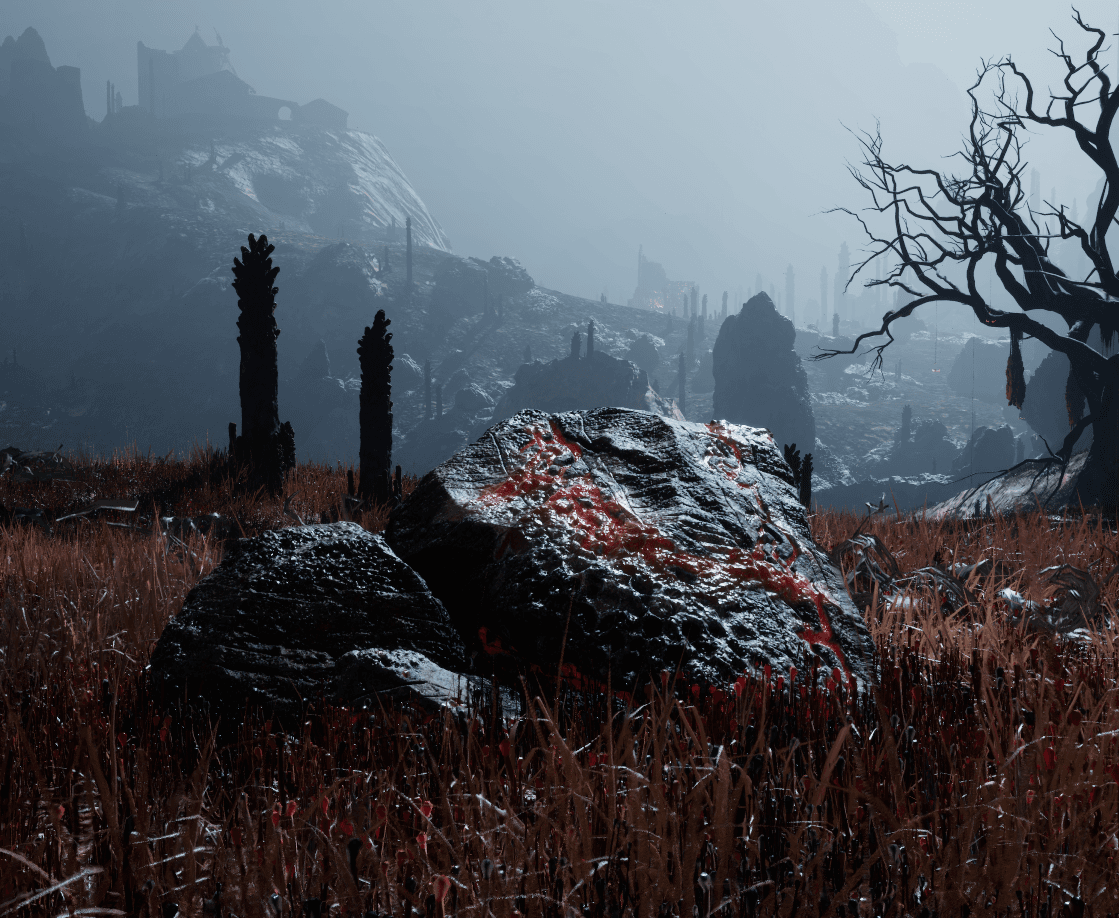
As an aside, one reason we’ve been changing the inventory icon symbols recently is the work related to showing the Enchantment status of items in the icon. The other related feature that needs a place in the icons is Master Crafting, where the design intent is that, in the future, any item with Item Power that gets crafted with a near 100% success rate will get an additional Item Power boost and Master Crafted label.
The rationale for these changes to Lyonesse is twofold. Firstly, with unique resources in Lyonesse, we wanted to tune the risk-reward for playing in Lyonesse. Especially with some of the harvesting being tied to PvE, the additional risk of PvP meant we wanted to make it easier to slip into Lyonesse, get some goods and slip out undetected, as the number of people playing in Lyonesse is expected to grow quite a bit.
Secondly, we don’t yet have an ETA for the other features we’re working on for Lyonesse, but we intend to add Trade Towns where you’ll bid gold to get hold of a plot safe from PvP, as well as PvP battling over controlling towers and their associated areas to build a home in Lyonesse. As mentioned above, this requires space in the world area.
The features in Lyonesse will be built on top of a foundational Feudal System. This is a new system that will allow the formation of PvP alliances, which will influence the PvP flagging in Lyonesse. We are also looking at connecting the alliances into a dominion system that will allow taxation of the player markets based on a set of rules on which properties the alliance controls in the world.
Last but not least, we’re looking at introducing Parishes. On a high level, this will mean the ability to create an altar that forms a parish, to which other players can join. As players in a parish earn grace, Priests and other members of the Parish who are in a position of power will gain a Grace kickback. This system will come with Miracles that are very expensive and effectively only available to the players in a position of power, with some tied into enabling actions for the Feudal alliances.
With all that said, thanks for reading until the end. We’ll be releasing more details on all of the above as things get closer to release.
Pax vobiscum,
The Mainframe Team